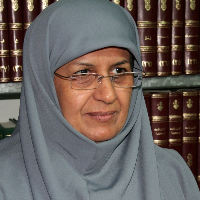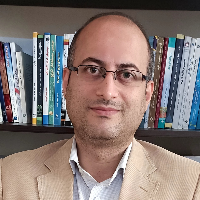m. shabanzadeh
-
شتاب بالای تورم در یک دهه گذشته، هزینه ی زندگی را در کلان شهر تهران با افزایش مواجه ساخته است. گزارش برنامه جهانی غذا (WFP) نشان می دهد استان تهران در مقایسه با سایر استان های ایران بالاترین میزان نابرابری رفاه را دارد و بخش قابل توجهی از جمعیت استان تنها سیری شکمی دارند. این مسئله سبب شده تا ابتلا به کوتاهی قد، بیماری های قلبی عروقی، سرطان ها، چاقی، دیابت، پوسیدگی دندان و بیماری های گوارشی در میان خانوارهای تهرانی افزایش یابد. در این راستا اگر چه با تصمیم کارگروه سلامت و امنیت غذایی و مشارکت دستگاه های مختلف برنامه هایی به منظور ارتقاء سطح سلامت و تغذیه ساکنان استان انجام گرفته است، اما شیوع نارسایی ها و بیماری های مختلف ممکن است در نتیجه کمبود مواد مغذی در سبد غذایی و در نتیجه ناامنی غذایی باشد. از آن جا که تامین سلامت و امنیت غذایی از اهداف راهبردی سند چشم انداز بیست ساله کشور است، در این مطالعه ابتدا بر اساس طبقه بندی گروه کالایی مرکز آمار ایران و با استفاده از ماتریس عملکرد تغذیه ای، سطح دریافت مواد مغذی در دهکهای مختلف درآمدی استان تهران در سال 1397 بررسی شده است. سپس با استفاده از روش جورسازی مصرف مواد مغذی، تنوع و امنیت غذایی دهک های درآمدی استان تحلیل شده است. نتایج نشان داد که وضعیت دریافت کلسیم، آهن و ویتامین C در میان خانوارهای دهک پایین درآمدی استان تهران بسیار ناگوار است و یک فرد بالغ در سه دهک پایین درآمدی روزانه تنها حدود 14، 487 و 75 میلی گرم از این سه ماده مغذی را دریافت نموده است. در مورد سایر مواد مغذی نیز یک فرد بالغ در سه دهک پایین درآمدی پروتئین و ویتامین A را به ترتیب معادل 72 میلی گرم و 551 میکروگرم دریافت نموده که در سطح حداقل مورد نیاز روزانه است و تنها کربوهیدرات و ویتامین B1 به ترتیب به میزان 339 گرم و 1/5 میلی گرم دریافت شده که بالاتر از حداقل نیاز روزانه می باشد. شایان ذکر است که در همه دهک های درآمدی سطح دریافت کربوهیدرات بیش از سه برایر آستانه مورد نیاز روزانه فرد بالغ است (130 گرم). نهایت آن که بر اساس نتایج خانوارها در سه دهک پایین درآمدی نسبت به سایر دهک ها تنوع و امنیت غذایی پایین تری دارند.
کلید واژگان: امنیت غذایی، تنوع غذایی، دهک های درآمدی، روش جورسازی، مصرف مواد مغذیIntroductionThe rapid acceleration of inflation over the past decade has increased the cost of living in the metropolitan area of Tehran. The World Food Program (WFP) report shows that Tehran province has the highest rate of welfare inequality compared to other provinces in Iran, and a significant portion of the province's population has only abdominal satiety. This has led to an increase in short stature, cardiovascular disease, cancer, obesity, diabetes, tooth decay and gastrointestinal diseases among Tehran families. In this regard, although with the decision of the Working Group on Health and Food Security and the participation of various agencies, programs have been carried out to improve the level of health and nutrition of the residents of the province, but the prevalence of various deficiencies and diseases may be due to lack of nutrients in the food basket and as a result of food insecurity.
Materials and MethodsSince ensuring health and food security is one of the strategic goals of the 20-year vision document of the country, in the present study, households living in Tehran province were first divided into three lower income deciles, four middle deciles and three upper income deciles according to the raw data of the income expenditure of the Statistics Center of Iran. Then based on the classification of the commodity group of the Statistics Center of Iran and using the nutritional performance matrix, the level of nutrient intake in different income deciles of Tehran province in 2018 has been investigated. Then, using the Matching method, nutrient consumption, the diversity and food security of the province's income deciles have been analyzed.
Results and DiscussionThe results showed that the level of calcium, iron and vitamin C intake among households in the lower three deciles of Tehran province is very low and an adult received only about 14, 487 and 75 mg of these three nutrients per day. As for other nutrients, an adult in the lower three deciles of income received protein and vitamin A 72 mg and 551 micrograms, respectively which is at the minimum daily requirement and only carbohydrates and vitamin B1 has been received 339 g and 1.5 mg, respectively which is above the minimum daily requirement. It should be noted that in all income deciles, the level of carbohydrate intake is more than triple the daily threshold required by an adult (130 g). Finally, according to the results, the lower three deciles of income have lower diversity and food security than the other deciles.
ConclusionConsidering the current situation of receiving micronutrients in Tehran province, the culture and nutritional literacy of households has a great importance and role that responsible organizations can play an important role in promoting it through culture as well as specialized and general education. At the same time, the stability of food prices along with the provision of cash grants and targeted food packages can increase the consumption and food diversity of households and significantly increase food security in poor households, especially women and children. In this regard, considering that a significant part of the country's resources is wasted annually in the form of hidden and non-targeted subsidies, Iran ranks first in the world in the payment of non-targeted food and fuel subsidies, therefore, targeting subsidies and paying cash and non-cash subsidies with proper identification of the target community, in accordance with the conditions of the country is an important issue that should be considered by policy makers.
Keywords: Income deciles, Nutrient intake, Food diversity, Food security, Matching methods
- در این صفحه نام مورد نظر در اسامی نویسندگان مقالات جستجو میشود. ممکن است نتایج شامل مطالب نویسندگان هم نام و حتی در رشتههای مختلف باشد.
- همه مقالات ترجمه فارسی یا انگلیسی ندارند پس ممکن است مقالاتی باشند که نام نویسنده مورد نظر شما به صورت معادل فارسی یا انگلیسی آن درج شده باشد. در صفحه جستجوی پیشرفته میتوانید همزمان نام فارسی و انگلیسی نویسنده را درج نمایید.
- در صورتی که میخواهید جستجو را با شرایط متفاوت تکرار کنید به صفحه جستجوی پیشرفته مطالب نشریات مراجعه کنید.



